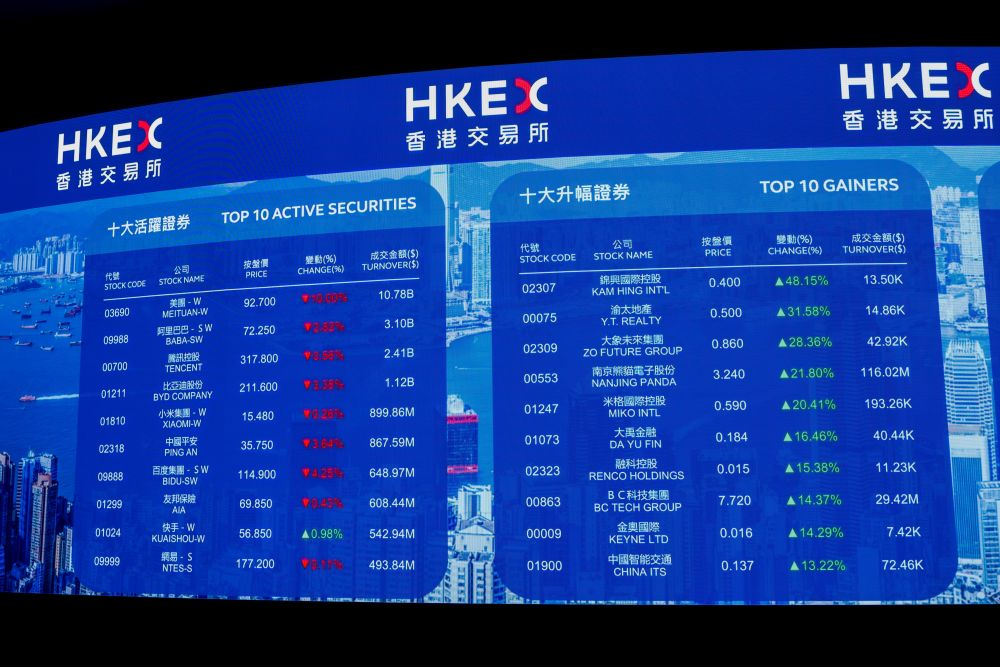With broad equities weaker in 2022 due to the ongoing war in Ukraine, rising interest rates, global supply-chain disruptions and inflation, infrastructure has been drawing increased investor attention.
Around the world, in an effort to kick-start their pandemic damaged economies, infrastructure projects are being launched by governments who see the developments as providing the impetus for job creation opportunities and sustainable economic growth.
As an asset class the infrastructure sector offers a number of opportunities amid developments, such as the move to net zero. Singapore’s central bank, for example, recently sold US$1.72 billion of a 50-year sovereign green bond and plans to use the funds to build green infrastructure in the city-state.
The Asset recently spoke with ClearBridge Investments' Shane Hurst, managing director and portfolio manager, and Matt Bushby, managing director, head of infrastructure business development, on why infrastructure is an important asset class and where opportunities lie in the infrastructure investment market in the Asia-Pacific region.
TA: In this high-inflation environment, what makes infrastructure investment especially attractive?
CBI: Infrastructure’s power as an inflation hedge is something we would emphasize. Broadly, infrastructure can adjust to inflationary environments due to the largely pre-programmed way it builds inflation into regulation and contracts.
This applies to both regulated utilities, who have a regular adjustment to their asset base or cost of capital for inflation and user-pays assets, such as toll roads, airports or rail, as tolls, airfares or rail changes mechanistically adjust with inflation.
With infrastructure and utilities hedging inflation, the growth of dividends is attractive and will grow above inflation, closely tracking the asset growth of the underlying companies.
This unique hedge on inflation leads to the underlying asset base growth remaining the key driver of returns for investors, allowing attractive risk-adjusted returns regardless of whether we are in a high or low inflation environment.
Infrastructure’s pricing power comes from the essential nature of its assets: even at times of economic weakness, consumers continue to use water, electricity and gas, drive cars on toll roads and use other essential infrastructure services.
The income we generate from infrastructure and utilities is also underpinned by long-term contracts and regulation, which ensures a steady flow of revenue over a long period. In a high inflation environment, these characteristics are especially attractive.
TA: Which countries in the Asian region are going to lead the infrastructure investment drive?
CBI: In the shorter term, from a regional perspective, post-Covid reopening and the revival in tourism and consumption in Asia have lagged Europe and Americas, but they are starting to gain momentum.
This is positive for transport infrastructures, such as in Thailand. High global energy prices also provide an earning upside for utilities in countries like the Philippines and Indonesia.
More broadly, the infrastructure investment drive is a global phenomenon, with much of it led by the effort to decarbonize the global economy. Infrastructure and utilities are at the forefront of this effort and can offer investors a stable return on equity without taking technology risk.
Annual power sector capital spending is expected to increase from US$760 billion in 2019 to US$2.5 trillion (in 2019 dollars) by 2030, mostly on solar, wind and other renewable energy generation and on modernizing and extending electricity networks, partly to accommodate growing numbers of electric vehicles.
Midstream pipelines are also beginning to facilitate an energy transition through hydrogen or carbon capture and storage, developing technologies that will only have an increasing role in net-zero efforts.
TA: What will be the hottest infrastructure sectors in the next few years? Is it all about energy transition assets - solar, offshore/onshore wind and related infrastructure?
CBI: Energy transition assets definitely have the largest policy momentum, with the REPower EU plan and the US Inflation Reduction Act recent examples, but it is important to recognize the long-term time frame of these sectors and see just as much growth, if not the scale, of other infrastructure tied to economic and demographic growth.
The case of rail is interesting in that it offers both: rail volumes are tied to economic growth and rail is also an ESG [environmental, social and governance] winner in the transportation industry due to its unique ability to reduce transport-related carbon emissions. Rails are on average four times more fuel efficient than trucks, producing up to 75% less emissions.
Energy infrastructure likewise has a role to play in contributing to an energy transition through adapting its pipeline network for hydrogen and carbon capture and storage. So other industries will benefit from the same push to decarbonize. Meanwhile, growing populations and a growing middle class in many regions will support growth for GDP-sensitive assets like toll roads and airports.
TA: Are family offices investing in the infrastructure asset class?
CBI: We have seen interest in listed infrastructure allocations from family offices for many years. In addition, a number of private banks in the Asia-Pacific region are investing in infrastructure as it provides attractive income levels, inflation protection as well as an asymmetric return profile, which historically has protected investors’ capital from the worst of equity market and Reit [real estate investment trust] sell-downs while capturing an appropriate amount of upside.
This asymmetry generates attractive compound returns over time and importantly a different path of returns to traditional equity sectors, while the resilience of cash flows from these essential assets, with high levels of inflation pass through, means real purchasing power is maintained over time.
TA: Is there room for retail investors to invest in this trend? Could infrastructure assets be democratized into smaller tranches, for example? Or is it an institutional-only play?
CBI: There is ample room for retail investors to invest in infrastructure. The listed infrastructure market, in particular, provides investors with a broad, deep and liquid range of infrastructure investment opportunities, such as utilities, contracted renewable energy, transport, such as airports, toll roads and rail, and communications at attractive valuations.
It also provides the investor with flexibility to choose or amend an investment horizon. Private market infrastructure investing, meanwhile, faces a dynamic of growing demand and constrained supply, which has exerted significant downward pressure on available returns in unlisted infrastructure.
With capital deployment in unlisted infrastructure becoming increasingly challenging, listed infrastructure looks all the more attractive and is easily accessible for retail investors.









